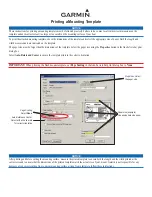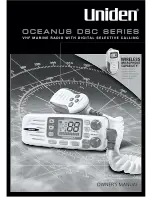
• Secure the included mounting template to the surface at
the chosen mounting location, along the bow-stern axis as
indicated on the template.
2
Determine which of the two mounting-hole patterns indicated
on the template are appropriate for the mounting surface and
drill the four mounting holes using a 15 mm (
19
/
32
in.) drill bit.
3
Remove the hatch on the front of the pedestal by loosening
the screw and lifting the hatch off of the hinges.
4
Apply the included Petrolatum Primer to one half of the
threads of the four threaded rods.
5
Insert the ends of the threaded rods coated in Petrolatum
Primer into the pedestal, matching the hole pattern drilled in
step 2.
6
Tighten the threaded rods
À
using a 5 mm hex wrench
Á
.
To avoid damaging the pedestal, you should stop tightening
the threaded rods when they no longer turn easily.
7
Install the isolators
Â
over the threaded rods, and push them
securely onto the four raised locations on the bottom of the
pedestal.
Mounting the Radar
Before you can mount the radar, you must first select a
mounting location, and prepare the mounting surface and the
radar (
Preparing the Surface and the Radar for Mounting
).
1
Take note of which end of the pedestal you plan to mount
facing the bow along the bow-stern axis.
If the hatch side is facing the bow, you must adjust the front-
of-boat offset on the chartplotter to receive an accurate radar
reading (
).
2
Position the included strap over the antenna, as close to the
pedestal base as possible
À
.
3
Hoist the radar into position, and carefully lower it onto the
mounting surface, feeding the threaded rods through the
holes.
4
From under the mounting surface, place the shoulder
washers
Á
on the threaded rods and feed them into the
mounting surface so they fit securely.
5
Place the flat washers
Â
, lock washers
Ã
, and hex nuts
Ä
on
the threaded rods.
6
Torque the hex nuts to 1.5 kgf-m (130 lbf-in. [11 lbf-ft.]) to
securely fasten the radar to the surface without damaging the
radar or the mounting hardware.
2
GMR 420/620/1220/2520 xHD2 Series Installation Instructions


























